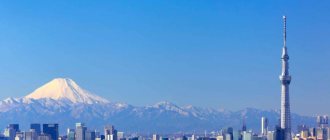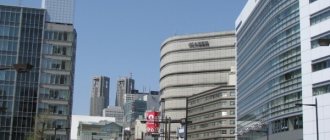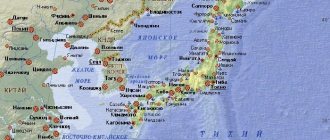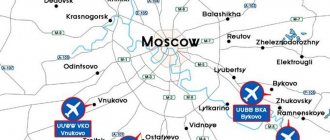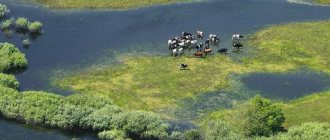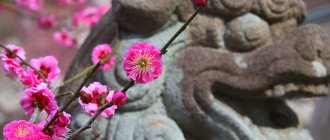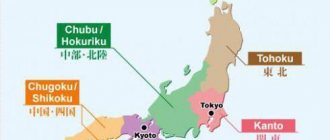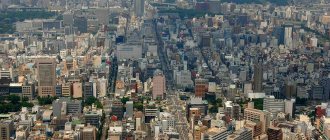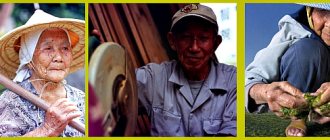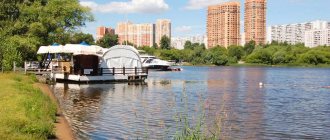Top 10 largest islands on earth, their location on the map
The following are the largest islands on Earth:
1st place: Ellesmere Island
The largest island in the northern part of the Canadian Arctic Archipelago. It is washed by the Arctic Ocean. Conventionally, this is one of the Queen Elizabeth Islands.
It owes its name to the Earl of Ellesmere, a prominent British statesman. The first people set foot on this island back in the 5th or 6th century. People came here from Chukotka and Siberia. William Baffin was the first to discover and comprehensively explore this island.
9th place: Victoria Island
This is practically the only island of the Seychelles that has a city. This is the center where the business and cultural life of the entire archipelago takes place. This is a Canadian island. The island owes its name to Queen Victoria, who ruled Great Britain at that time.
Throughout the 19th century, major expeditions were carried out here. This island has a winding coastline. A crater from a fallen meteorite was recently found on this island. The climate gradually changes from subarctic to purely arctic. In summer the temperature sometimes reaches twelve degrees. Precipitation occurs throughout the year.
Winter is very harsh; in the north of the island the temperature is often -20 degrees . The population here is sparse, no more than 2 thousand people. Due to the climate, flora and fauna are very poor. However, there are a lot of fish under water suitable for fishing. In spring and summer, tourists from Western countries sometimes come here to get acquainted with the inhabitants of the island and their culture.
8th place: Honshu Island
Man appeared on this Japanese island forty thousand years ago. In the 5th century BC, people began to sow rice and make clay products. In the eighth century AD there was a real state formation here, led by the city of Nara, which was the capital city of Japan.
There are a lot of cultural monuments left here. Nara's vast cultural heritage attracts orientalists who study the history and culture of Japan. Europeans arrived here in the 16th century.
They were missionaries and Jesuits. But the Japanese have always been very selective in their cultural borrowing. They took well-developed production techniques from the West, but did not let Europeans get close to them. Therefore, even today, technical progress and national flavor coexist here.
7th place: Great Britain island
Great Britain needs no special introduction to its readers. This country attracts people from childhood, since everyone begins to learn English from an early age and get acquainted with such sights as Big Ben and Westminster Abbey.
London has a business center called the City, and the West End is especially distinctive, where life is bustling with workers from a variety of firms and organizations. England is also famous for its green meadows and farms. Moreover, in this country there are individual counties that contain entire centuries of history.
6th place: Sumatra island
An island in the very west of the Indonesian archipelago, the largest in this part. It has mountain ranges and many volcanoes, some of which are active. The climate is very hot.
There is Lake Toba, which is the largest in all of Southeast Asia. Sumatra also has a large number of rivers. 30% of its territory is occupied by forest, of course, tropical. A very diverse world of animals. Here they engage in farming and mining.
5th place: Baffin Island
It is the largest island in all of Arctic Canada. The population consists of only 11 thousand people. The waters are home to many different marine animals. This island has several national parks.
There are no national parks in the north, but there is a bird sanctuary. If you come to the village of Pangnirtung, it won’t take long to get to places with beautiful views. Northern nature is also beautiful in its own way, which is why tourists love to travel to the north.
4th place: Madagascar island
The capital of Madagascar has a complex long name - Antananarivo. Mostly indigenous peoples live here. There are only 2 seasons a year: summer with rain and winter with dry weather. In total there are 5 districts in terms of climate.
In winter, destructive cyclones sometimes occur. The wind can be at a huge speed of 200 km per hour.
3rd place: Kalimantan island
70% of this island is owned by Indonesia. The island is famous for its interesting tropical jungle and aborigines, but it also has very good architectural works. The town of Banjarmasin has very interesting floating markets. The surrounding area of this city has a museum with ancient artifacts of the Dayak people. Kalimantan is also called Barneo.
2nd place: New Guinea
It, like many previous islands, will be discussed further in this article. This is a very large island. It is important to mention that this island has a tropical climate and has many rivers.
The islands have very beautiful and rich nature. Papua New Guinea is now a state independent of Australia. Here, too, there are only 2 seasons throughout the year. But they are both very warm and soft.
1st place: Greenland island
The largest island in the world is Greenland, almost completely covered with ice. This island is located mostly within the Canadian Shield. Greenland rose above sea level during the Cenozoic era. There was glaciation here at a later time. Inland, the glaciers slowly become higher and higher.
see also
- Geography of Japan
- Hokkaido
- Kyushu
- Shikoku
| This is a draft article on the geography of Japan. You can help the project by adding to it. |
| : Incorrect or missing image | This article lacks links to sources of information. Information must be verifiable, otherwise it may be questioned and deleted. You may edit this article to include links to authoritative sources. This mark is set July 7, 2014 . |
K:Wikipedia:Articles without sources (type: not specified)
List of the largest islands in Russia
The following is a list of the largest islands in Russia:
Karaginsky Island
This is an island with an area of 2.4 thousand km². It is a little more than 100 km in length and 27 km in width. The location of the territory is the Bering Sea, quite close to Kamchatka. It has a varied topography, mountains, capes with steep banks. The climatic conditions are harsh, winter lasts almost 7 months.
Rich world of flora. Known plants are larch, rowan and alder. Whales live near the coast, and bears live on the land. The coasts are a nesting place for many species of birds that cannot be found in the middle zone. Few people live on Karaginsky Island. The people servicing the lighthouse are on watch.
Vaigach Island
This is an island with an area of 3.4 thousand km². Its length reaches 100 km, its width – up to 44 km. The location is further than the Arctic Circle, Novaya Zemlya is not far away.
The origin of the island is mainland. The terrain is mostly flat, but there are a few mountain ranges. The natural environment is something transitional from the tundra to the arctic climate. Frosts in winter reach -25 C. Summers are cold, the maximum temperature is +12 C.
Grow:
- short grass;
- lichens;
- creeping annuals.
Among the animals there are:
- walruses;
- reindeer;
- the Bears.
Kolguev Island
The island is located on an area of approximately 3.5 thousand km². Its diameter is approximately 80 km. The location is located further than the Arctic Circle, around the Barents Sea. This island has a subarctic climate, with average annual temperatures fluctuating greatly.
Shrubs grow throughout the area. The island has a very poor fauna. The population resides in only 2 villages. A maximum of 450 people live there.
Wrangel Island
The area is 7.67 thousand km². The length is no more than 150 km. The location of the land is the junction of 2 seas: the Chukchi and East Siberian. There are plateaus, mountains and lowland plains.
The climate is harsh due to the presence of air from the Arctic. In addition to lichens, cinquefoil and Lapland poppy grow. The fauna is quite diverse. There are almost 40 species of birds on the shores. The places are very comfortable for various northern animals. People have not yet inhabited this island.
Kurile Islands
This archipelago is located on an area of 15.6 thousand km². It is more than 1200 km long. The territory is a division between the Sea of Okhotsk and the Pacific Ocean. Mountains form the basis of the relief; there are a lot of volcanoes. The climatic conditions are mild, winter lasts long, summer is not sunny.
Sometimes there is a storm or an earthquake in the Kuril Islands, and this happens quite often. The flora is completely multifaceted, with a total of as many as 1,400 plant species. On the slopes there are trees such as aspen, oak, and maple. On the shores there are different species of birds that live in the ocean. There are forest animals on the ground. The area is mostly inhabited by people.
Franz Josef Land
The size is as much as 16.13 thousand km2. It’s very close to the North Pole, there are glaciers all around. But the relief is full of structures of volcanic origin. Lakes are present in large numbers. Under the Arctic conditions of the territory, frosts often reach -50o C. In summer, the maximum temperature is +2 C. The mosses are very remarkable.
Severnaya Zemlya
The archipelago covers an area of as much as 37.6 thousand km2. The island of Taimyr is located nearby. The islands originated from the mainland. Ice predominates over the entire surface. Placers of stones make up 3 parts of the archipelago. Climatic conditions are typical for the Arctic zone, summers are very cool, winters are harsh.
The land that is not covered with ice consists of swamps. In addition to mosses, there is polar poppy and saxifrage. But there is a rich fauna. The coastline is occupied by birds. The entire coastline consists of a bird colony. There are no people on the islands.
New Siberian Islands
The archipelago measures 38.4 thousand km2. Originated from the mainland. They are a plain. Winter lasts for 9 months. In summer there are strong winds and low temperatures. The fauna is very rich, but the flora is poor.
Sakhalin
The island is 76.4 thousand km2 in size. 948 km long, 160 km wide. The island's location is close to the Russian coast on the eastern side, bordered by the Sea of Okhotsk and the Sea of Japan. The island originated from the mainland. It combines plains with mountains.
Winters are long, summers are very cool. Rich flora. There are animals such as raccoon dogs or minks, as well as brown bears. This island is the most populated. This is the most populated island in Russia.
New Earth
The area of this archipelago extends over as much as 83 thousand km2. It is 925 km long. Located at the junction of three seas. Temperatures are purely arctic. In winter the frost is -40 C, the winds are very strong. In summer no more than +7 C. Poor flora. Arctic foxes, lemmings, and reindeer live here. This is the home of military personnel and meteorologists. As a rule, there are no more than 2500 people.
Atlas, Cities and countries, seas and oceans. Around the World, Mysteries of the 20th century, The whole world is in your hands
For many centuries, Japan remained closed to traders and travelers from other countries. The key to the gate to Japan was reliably guarded by clans of samurai warriors. But their swords and devotion to the emperor could not withstand technological progress, as well as the pressure of the Americans, when the squadron of their “black ships” approached the island of Honshu.
JAPAN WAS BORN HERE
Ancient people came to the island of Honshu tens of thousands of years ago. The island's isolated position explains the uniqueness of Japanese civilization.
Signs of human activity discovered on Honshu gave grounds to assert that man settled here as early as 40 thousand years BC. e. This period is usually called the beginning of the Japanese Paleolithic, which lasted until the twelfth millennium BC. e. The ancient inhabitants of Honshu hunted wild animals and collected edible roots. During the Jomon period (13,000-300 BC), the inhabitants were engaged in gathering and fishing. By this time, the production of ceramics with rope patterns had already been mastered. In the 5th century BC e. Here they began to engage in irrigated rice sowing, the manufacture of clay products, and weaving and smelting of bronze and iron also began to develop. All these skills, as well as the ability to build protective walls, appeared on Honshu thanks to settlers from China and Korea.
Along with skills in crafts, the population of Honshu adopted Buddhism, which came here from the Korean state of Baekje. By that time, the Japanese had already laid the foundations for the creation of a state system in Honshu and developed the first set of laws (“ritsure”). Already by the 8th century. a strong centralized Japanese state appeared here, headed by the emperor, who settled in the capital Heizeke on the territory of Nara (now the administrative center of Nara Prefecture). Nara was the capital of Japan in the period from 710 to 784. The originality of the city's architecture is explained by the fact that the Chinese capital Chang'an was taken as a model, but elements of the emerging Japanese architecture are visible in the buildings.
There are many old Buddhist temples and schools preserved in Nara, the most famous of which are Todai-ji, Kofuku-ji, and Yakushi-ji. The Heijou Imperial Palace and Sesoin, the place where the imperial jewels are kept, are also located here.
In 794, the capital was moved to Heian-kyo: now it is the city of Kyoto. It was here that the Japanese national culture was born, which began with the “kana” syllabary alphabet. This is how Honshu got its own language - instead of Chinese.
The same period is marked by the establishment of a ruling class of samurai warriors. They managed to repel the Mongol invasions of Honshu in 1274 and 1281 and made Zen the official religion of the empire in Honshu. But after the victory, the samurai began to share glory and land, marking the beginning of a centuries-long period of inter-clan samurai wars.
The first Europeans to reach Honshu, in 1543, were Dutch traders and Jesuit missionaries. Of the many European technologies, the samurai most quickly mastered the technology of producing firearms, using them in civil strife. The inhabitants of Honshu preferred to keep the Europeans themselves at some distance, having built the artificial island of Dead Winter in the harbor of Nagasaki (Kyushu Island) for the Dutch trading post.
For more than two hundred years, Japan traded only with China and Holland. The Americans were interested in penetrating the Japanese market, including for the further development of China. Therefore, after repeated refusals by the Japanese, the United States decided to end Japan's policy of self-isolation through a show of military force. In 1853, Commodore Matthew Perry dropped anchor off the coast of Japan, near the city of Edo, which was the center of the shogunate. American warships then made a strong impression on the Japanese: for the first time they saw steam ships with black sides that emitted black smoke, for which the squadron received the name kurobune, “black ships.” However, then the commodore only achieved consideration of the US proposals and left for Hong Kong, awaiting the shogun's decision. Already in 1854, Perry again entered the harbor of Uraga (near the city of Edo).
The Japanese, who did not expect Perry's imminent arrival and were in a difficult situation after the death of the shogun, agreed to all the US conditions.
On March 31, 1854, a treaty of peace and friendship was signed between Japan and the United States. Under this agreement, the Japanese side pledged to provide all assistance to the US fleet and provide conditions for trade. This historical event on the island of Honshu marked the opening of Japan to the Western world. Over the next five years, Japan signed similar treaties with Russia, France and England.
Tokaido, or the Japanese Metropolis, occupies the entire southern part of the island, and the bulk of Japanese industrial production is concentrated here. Tokaido consists of three urban agglomerations. The first is the Keihin metropolitan area (Tokyo, Yokohama, Kawasaki, Chiba). The second is Hanshin (Osaka, Kobe, Kyoto). The third is Tyuke (Nagoya with satellite cities). The total population of the metropolis exceeds 60 million people (approx. 48% of the country's population).
EVERYTHING IS BIGGEST IN HONSHU
Honshu Island is the largest island in Japan. The coastline along the Inland Sea of Japan and the Pacific coast is noticeably indented, but the coastline of the Sea of Japan is relatively flat. The island is located in a seismic zone and is home to twenty active volcanoes, as well as many extinct ones, surrounded by highlands and lowlands of volcanic origin.
Most of the island is occupied by low and medium-high mountains, the height of which gradually decreases towards the north. The center of the island is dissected by the reef zone of Fossa Magna or the Great Moat, with sharply defined ledges facing east. In the southern part there is the active Fuji volcano, one of the national symbols of Japan.
The indigenous inhabitants of Honshu - the Ainu - have long deified the beautiful volcano, and named it in honor of the goddess of fire Fuji. Fuji is also given an honorable role in the official religion of Japan, Shintoism, according to which Fuji is the link between earth and heaven. For Buddhists, this volcano is no less important: they believe that the path winding along the slope at an altitude of 2500 m indicates the direction of exit to another world.
The volcano is located in the Fuji-Hakone-Izu National Park, which includes the forested volcanic region of Hakone and the ice-free crater Lake Ashi, on the shores of which stand the “tori” of the Hakone Temple. "Tori" - ritual gates in front of the sanctuaries; they are very characteristic of Honshu, and are found everywhere here. Tory is easy to spot; they are traditionally painted bright red. As a rule, each temple has several tori. The Fushimi Inari Shrine in Kyoto, the main shrine to the goddess of rice and abundance, Inari, is home to several thousand tori. According to Japanese belief, those who succeed in business are obliged to donate to the tori temple.
But the most famous tori stand at Itsukushima Shrine, one of the main attractions of Honshu and an easily recognizable symbol of all of Japan, included in the UNESCO World Heritage List. The tori was built from camphor wood in 1875, its height is 16 m, and at high tide the gates are submerged in water. The sanctuary itself in its current form was built in the 16th century, and is officially considered a “national treasure” of Japan.
In the same category of “national treasures” is Himeji Castle, or White Heron Castle, one of the oldest castles in Japan. It was built in the middle of the 14th century, at the foot of Mount Hime (Hyogo Prefecture). It probably received its second name for the resemblance of “flying” architecture to a beautiful white bird.
The island of Honshu has all the “best” things in Japan. In addition to the highest point of Mount Fuji, Japan’s longest river, Shinano (367 km), also flows here and the country’s largest lake, Biwa, is located (area 670 km2, depth 103.58 m). Biwa is one of the oldest lakes in the world (the third after Lake Baikal and Lake Tanganyika).
"Biwa" is not only a lake: it is also the name of the Japanese national musical instrument, similar to a lute, with four strings and four frets, on which the classical Japanese music gagaku is played, producing sound using an 18-centimeter plate.
It was for this instrument that a song was written glorifying the unique railways of Honshu, famous for the accuracy of their train schedules. The world's first high-speed line, the Tokaido Shinkansen, was built between Tokyo and Osaka; The 250 high-speed Shinkansen trains reach a maximum speed of 300 km/h, and the average train delay is only 6 seconds.
FUN FACTS
■ One of the world's most famous electronics companies is named after a city located on the island. Honshu - Mr. Hitachi.
■ In 1998, the XVIII Winter Olympic Games were held in Nagano, located north of Tokyo. This Olympics glorified Russian figure skater Oksana Grischuk and skier Larisa Lazutina.
■ Tokyo, together with its surrounding prefectures, is home to more than 25% of the country's total population. About 50% of companies, government agencies and media have representative offices in the capital. There are also approx. 85% of foreign financial institutions registered in Japan.
■ In the 1980s. For every Japanese person over 65, there were eight between the ages of 15 and 64. By 2021, this ratio will be one to three.
■ Japan's population is extremely homogeneous, but there are two exceptions. The first one is ok. 600 thousand Koreans. Second - ok. 3 million Burakumin, descendants of the medieval caste of cattle slaughterers, leather workers and scavengers, considered “people of dirty labor.”
■ There is an assumption that the prototype of the national symbol of Russia - the nesting doll - was a figurine of the Buddhist monk Fukurumu brought from the island of Honshu, which contained several figures nested one inside the other.
■ The largest specimens of the poisonous fugu fish, considered a delicacy in Japan, are caught on the Pacific coast of the island. Honshu.
ATTRACTIONS
■ Twenty active volcanoes; ■ Himeji Castle (White Heron Castle) (XIV century) (Himeji city); ■ Rean-ji Temple (1450) (Kyoto); ■ Fuji-Hakone-Izu National Park (Fuji, Lake Ashi); ■ Hot springs on the Izu Islands; ■ Towada-Hachimantai National Park; ■ Sacred Gate of Itsukushima Shrine (1875) (Miyajima Island); ■ Castle in Iwakuni (1601-1608); ■ Kegon Falls in Nikko National Park (Nikko).
Atlas. The whole world is in your hands No. 81
Like
SocButtons v1.5
Large islands in Africa
Africa is also famous for its large islands.
Tristan de Cunha Archipelago
The total area of the islands of the entire archipelago occupies 207 km². The shape of the island is round. The diameter is 9.5 km.
This is the farthest land from the continent, which is located in the southwest.
The island appeared in connection with active volcanoes in the past. The weather on this island is very rainy. The coast consists of rocks, and there are many mountains on the island. There are no mammals. Penguins live here. The trees on the island are dwarf. The bushes are very small. It is an overseas possession of Great Britain, which has an administrative center called Edinburgh.
Sao Tome
Its area is 854 km². The location is near the western coast of the continent near Gabon. Nearby, 2 km to the south, is the equator. The coastline is rich in various bays and cozy bays. Most of this island has very high mountains.
Rapid rivers contain fresh water. There are citrus and peach groves here. Palm trees with fruits are found in flat areas. Sailfish and spiny fish live not far from the shore. The birds are completely unusual. Sea turtles are especially noteworthy.
Sao Tome is part of the island country of the same name and part of the country of Principe. The inhabitants are descendants of slaves, and there are also Creoles. More than 150 thousand people live on the island.
Zanzibar
The area reaches 1666 km². Its location is located in the Indian Ocean near the coast near the east of the continent. Zanzibar is an island of mainland origin. It has many small islands, rocks and quite a few reefs.
In the middle of the island there is a 136 m high mountain called Mount Carnujal. Many rivers flow into the strait. The flora is poorly represented, but there are many palm trees of different types around. There are a lot of fish, which attracts birds here. The island has a national park with exotic animals. The Zanzibaris left the continent. The island is owned by Tanzania.
Mauritius
It is an island with an area of 1865 km². The location of the island is the Indian Ocean. Madagascar is located nearby. The forests are rich in a wide variety of plants. There are many amphibians in the coastal zone. It is an island nation with a population that gives itself the name Indo-Mauritians.
Bioko
The largest island in the western part with an area of 2021 km². There are a large number of volcanoes that were once extinct. Previously it was a peninsula. Then he rose above sea level.
This island is very rich in both flora and fauna. Many tropical forests cover the island. This island is an insular part of Equatorial Guinea. Its highest point is located 3012 m above the sea.
Tenerife
Its area is approximately 2034 km². This is an island located in the Atlantic Ocean and part of the Canary Islands archipelago.
A very mountainous place, the island is divided in half by a mountain range, so the north differs from the south in climate. There is unique flora and fauna here. The island is part of Spain.
Comoros
2236 km² of area is occupied by this archipelago. The islands are located in the Indian Ocean on the way from the continent to Madagascar. Climatic conditions are similar all year round. The air is humid. The climate is purely tropical. The coast of this island is interesting. Coral reefs are home to different species of fish, and sharks swim in the ocean.
Animals are represented primarily:
- bats;
- lemurs;
- mongooses;
- turtles.
There are aborigines on the island, as well as Arabs and even people from France.
Reunion
The island covers 2511 km² and is located east of Madagascar. Its origin is volcanic. Lava covered large areas.
The island is inhabited by birds. You can visit the aquarium and park with crocodiles and other exotic animals. Creoles, Indians and French live on this island. These are the possessions of France. The island is very picturesque.
Socotra
It is an island with an area of 3626 km². The location of the island is the Indian Ocean. The island is formed by shifting tectonic plates. This island has many unique animals and plants. The local ethnic group is Socotrians, the population consists almost exclusively of them, although the island is the possession of Yemen.
Madagascar
The island covers a whopping 587,041 km². Its origin is mainland. It is in the southeast of the continent. The volcano, 2876 m high, is its highest point. Rapids and waterfalls are common. Endemic flora and fauna. The climate is determined by its location near the equator, with frequent monsoons. The population is very large and consists mostly of Malagasy.
Here are found:
- leaf-tailed geckos;
- lemurs;
- tomato frogs.
Metropolises and prefectures of the Kanto region
Megacities on the island of Honshu are mostly represented by the Kanto region. After all, it is the Kanto region that is considered the most developed in urban terms. The capital of the Japanese state, Tokyo, is located in this area. The government of the country and the imperial residence are also located there.
The region includes 7 districts:
- Ibaraki.
- Tochigi.
- Gumma.
- Saitama.
- Chiba.
- Tokyo.
- Kanagawa.
Ibaraki
The southeast of Honshu Island is represented by Ibaraki District. The total area of the region is 11,640 square meters. km., population as of August 2014 – 1.04 million people. The settlement of Mito is the main administrative unit of the district. The district consists of 10 towns, two villages, 7 counties and 30 large cities.
The officially chosen and recognized symbols of Ibaraki are the rose, the tree - the Japanese plum, the bird - the lark, and the fish - halibut.
Tochigi
Tochigi Prefecture is also located in the southeastern part of Honshu, just above Ibaraki District. The area of Tochigi is about 6400 square meters. km., the total population as of 2014 is 1.9 million people. The center of Tochigi District is the town of Utsunomiya.
The structure of the district is 11 villages and 14 cities. The symbols of the district are rhododendron, horse chestnut, blue flycatcher and Japanese serow.
Gumma
Gunma County occupies the center of the Kanto region. The area of Gumma is 6340 sq. km., population as of July 2014 – more than 2 million people. The county seat is Maebashi. One of the largest settlements in the district is the city of Takasaki.
The prefecture includes 15 towns, 8 villages, 7 counties and 12 cities. This district is one of the few that do not have access to water. The territory of the district has both mountainous and flat areas.
Gumma is often called the “crane region”, because the outlines of the district resemble a flying crane in its shape.
The symbols of the prefecture are pine, rhododendron, pheasant and ayu fish.
Saitama
Saitama County is located in the southeast of Honshu. Its area is almost 4000 sq. km., population – 7.2 million people. Saitama City is the central administrative unit. The structure of the region consists of 22 towns, 1 village, 8 counties and 40 cities.
At the same time, the average population density is about 1900 people per square kilometer. The official symbols of the prefecture are the primrose, the serrated zelkova, the turtledove and the stickleback fish.
Chiba
Chiba Prefecture is a multimillion-dollar region. Its area is more than 5000 sq. km., population is 6.2 million people, population density is 1200 people per square kilometer. The city of the same name, Chiba, is the center of the prefecture.
The district has full access to water on both sides - the Pacific Ocean and Tokyo Bay.
The district consists of 1 village, 16 towns, 6 counties and 37 cities. The close location to Tokyo gave impetus to the development of industrial sectors. Chiba is ahead of many prefectures in the field of agriculture, namely in growing vegetables. The Boso Peninsula is famous for its actively developing rice growing industry.
On the ocean and bay coasts, seaweed is collected in large quantities. The officially recognized symbols of the district are the turnip flower, large-leafed footcarp, red-eared bunting and red tie.
Tokyo
Megacities on the island of Honshu are rightfully headed by Tokyo. The literal translation of the name “Tokyo” is “Eastern City”. Tokyo is the permanent capital of Japan, its political, financial and industrial core. The city occupies the southeast of the island of Honshu, in the heart of Tokyo Bay.
The metropolis in 2021 is one of the most densely populated: with an area of 2200 sq. km., population is almost 18 million people. The peculiarity of the structure of the prefecture is that it consists of 23 self-governing municipalities. In addition to them, the structure also includes 26 large cities, 4 districts, 1 county, 5 towns and 8 villages.
Tokyo is the center of the economy and trade of the Japanese island. Mechanical engineering, instrument making, intellectual and creative fields of activity are considered widely developed.
Since its founding, Tokyo has been the political and cultural foundation of the country. One of the main historical monuments is Edo Castle - the pearl of the Japanese capital, the oldest cultural monument with a special status. It also houses the famous Imperial Palace.
Kanagawa
Kanagawa County is in the southern part of the region. The district has an area of about 2400 square meters. km., population – 9.1 million people. The center and main administrative unit is the metropolis of Yokohama.
The district includes 13 towns and 1 village. 6 counties and 19 cities . Among the total number of cities, the largest are Kawasaki, Yokohama, and Sagamihara. Fujisawa and Yokosuka.
The prefecture is famous for its special industrial status. It is in Kanagawa that the production facilities of such industrial giants as Mazda, Mitsubishi, Nikon, Toshiba, Hitachi are located. The symbols of the district are the glaucous gull, the gingko and the lily.
Islands in Europe
The following are descriptions of the large islands of Europe:
Spitsbergen
This is a very large archipelago, the northern part of Norway. It, together with coastal waters, is a demilitarized zone.
There are 3 largest islands: western Spitsbergen, North-East Land and Edge. There are also smaller islands. The relief consists of mountains. There are tundra plants there.
Sicily
This is a large part of Italy. The island is almost triangular, it is washed by 3 seas. The main city on this island is Palermo. It has Mount Etna, an active volcano. This island has a very rich history. There are many architectural monuments here. You can feel the interpenetration of cultures here. The climate on the island is hot.
Sardinia
Sardinia is located west of the Apennine Peninsula. It is part of Italy. The climate is hot. Here, like in Sicily, is the center of ancient cultures. Here some peoples were replaced by others, and they all left their heritage.
Sardinia managed to be part of:
- Byzantium;
- Spain;
- Austria.
Corsica
This is part of France. The coastline stretches for a thousand kilometers. The mountains are rich in a network of rivers and streams. Corsica was once also part of Italy. Napoleon was born on this island. Corsica is the 4th largest island in Europe.
Crete
The largest island in Greece, its main city is Heraklion. This island was home to the oldest Minoan civilization in Europe. The island often appears in ancient Greek mythology.
Mallorca
This is part of Spain, a very popular island visited by millions of tourists. There are many resorts on this island.
The main city is Palma de Mallorca. This is a very large port.
Gotland
This island belongs to Sweden. The plateau that this island is made of limestone and sandstone. The most important and famous city is Visby. The island is approximately 100 km away from the mainland. The inhabitants speak a special dialect that differs from the Swedish language in mainland Sweden.
Saaremaa
This is the largest island that belongs to Estonia. It has a flat landscape. The climate is mild and maritime.
Great Britain
The country has the same name as the island itself. Before this, England had not been connected to the continent by land, but not long ago a tunnel was dug under water. Athletes swam across the English Channel in its narrowest part. However, only a thousand people managed this.
Denmark
In addition to the Jutland Peninsula, there are many islands of different sizes that are also Danish.
Greenland is also part of Denmark.
Ireland
Ireland has an area of 84.1 thousand km². The island is very close to Great Britain. Northern Ireland is part of the United Kingdom.
Iceland
The area of this island, which also shares the same name as the country, occupies 103 thousand km². It has mountainous terrain and many glaciers. However, people on this island live very prosperously. Fishing is very developed here, since the best species of fish live near the island.
Metropolises and prefectures of the Tohoku region
Translated from Japanese, Tohoku sounds like “northeastern lands.” The area is washed by the waters of the Sea of Japan, the Pacific Ocean and the Tsugaru Strait. In general, the region occupies almost a fifth of the state. Much of the region's terrain is covered with hills and mountain formations; The climate is continental.
Aomori
Aomori is the center of Japanese agricultural development. The area of Aomori is about 9650 square meters. km., population – 1.35 million people. The structure of the region consists of 8 villages, 22 towns, 8 counties and 22 cities. The basis for the development and economy of the region is agriculture, namely the cultivation of fruit crops. Fishing and forestry are also actively developing.
Among the features of the district are Lake Towada, known for its volcanic origin, and the Shirakami Mountains. These mountains are recognized as an official UNESCO heritage site.
The region is famous for its many ancient monuments. These include the Sanai-Maruima site, founded in the Neolithic era. In addition to the parking lot, the ancient settlement of Hirosaki should be highlighted - it is also a UNESCO-protected monument. The official symbols of the district are apple blossom, swan, cypress and halibut.
Iwate
Iwate County is located in the central part of the region. The center of the prefecture is the town of Morioka. From the east the region has access to the Pacific Ocean. The climate is mostly dry and quite cool. The district includes 5 villages, 16 towns, 11 counties and 13 cities.
The predominant sectors of economic development are livestock farming and rice cultivation. Fishing, food production, and logging are well developed. The prefecture is a center for copper and iron ore mining.
Among the popular tourist places, it is worth highlighting many national natural parks - Sanriku Fukko, Towada Hachimantai. Tourists pay special attention to the Tsunagi hot springs. Hanamaki and Geto. Cultural features of the district include dancing with swords, cast iron products, and kokeshi dolls. The symbols of the prefecture are the paulownia flower, red pine, Japanese pheasant and chum salmon.
Miyagi
Miyagi County is the smallest in terms of area and population density. With an area of 7280 sq. km., population is only 2.3 million people. The locality of Sendai serves as the capital of the prefecture. It is the political and economic core of the Tohoku region as a whole. The composition of the prefecture: 20 towns, 1 village, 10 counties and 13 cities.
The basis of economic development is the actively developing agriculture, namely, rice cultivation. Most of the rural products produced are sold to the capital. In addition to rice growing, wood processing, fishing, paper production and machine construction were widely developed. The symbols of Mayaga are the gray elm and the wild goose.
Akita
Akita occupies the northern part of the region. Akita City is the main administrative division of the prefecture. The area of the district is 11.6 square meters. km., population – more than 1 million people. Akita includes 3 villages, 9 towns, 6 counties and 13 cities.
The economic foundation of the region is made up of mechanical engineering, tourism, agriculture and trade. It is in the Akita district that mountain beech forests are located, a UNESCO protected site. The significant distance from economically developed areas played a role in the formation of the spiritual and material cultures of the region.
In the temples of the district, processions, masquerades, and ancient traditional holidays are held at least twice a month. It was in Akita Prefecture that the famous dog breed, the Akita Inu, began to be bred. The symbols of the prefecture are the copper pheasant, cryptomeria and hairtooth fish.
Yamagata
Yamagata County occupies the northern part of the island of Honshu. Literally translated, the name means “mountain shape.” The area of Yamagata is 9320 square meters. km., population – 1.1 million people. The city of Yamagata is recognized as the center of the prefecture. The western part of the region has access to the Sea of Japan.
The structure of the district consists of 3 villages, 18 towns, 9 counties and 12 cities. The official symbols of the region are the cherry tree, Japanese serow and mandarin duck.
Fukushima
Fukushima is located north of Yamagata County. The area of Fukushima is 11,630 square meters. km., population over 1 million people. The city of the same name, Fukushima, is the central population center of the district.
The mountainous terrain divided the district into three parts: Hamadori, Aizu and Nakadori. Fukushima includes 15 villages, 30 towns, 13 counties and the same number of cities. The most famous incident is the large-scale accident at a nuclear power plant in 2011.
The disaster occurred as a result of a powerful earthquake of magnitude 7, after which most of the nuclear power plant collapsed almost to the ground. The symbols of Fukushima are the rhododendron, elm and Japanese flycatcher.
The largest islands of Japan
The following islands are the largest in Japan:
Honshu
This island makes up 60% of the entire country. This is where the world famous Mount Fuji is located. The height of this mountain is 3776 m. The relief consists of mountains. The climate of the island is subtropical in the south, and continental in the north.
Hokkaido
The relief of this island is heterogeneous; there are both mountains and plains.
Here there is snow in winter and summer is very cool. This is the coldest part of Japan.
Kyushu
The highest point on this island is the once active volcano Kuju. The climate belongs to the subtropical zone. The monsoons are blowing. Industry is better developed in the north, and the cultivation of plant crops plays a vital role in the life of the south.
Where is
Japan is located in the eastern part of Asia. From the southwest, Japan is washed by the East China Sea, which shares it with China. To the west, the Sea of Japan separates Japan and Korea. In the north and northwest, the country borders the Far Eastern region of the Russian Federation. The closest territories are the Kuril Islands and Sakhalin.
On the eastern side, Japan is washed by the Pacific Ocean.
There are several groups of islands belonging to it:
- Nampo,
- Izu,
- Ogasawara,
- Kazan,
- Minamitori et al.
Extreme points
Japan is a state that does not have land borders. The length of its coastline is 29.751 thousand km.
Its extreme points are located in the following places:
- North - Bantejima Island,
- South - Okinotori Atoll,
- Western - Cape Irizaki (Yonaguni Island),
- Eastern - Minamitori Island.
Square
The area of the state is 377 thousand 915 square meters. km, including all the islands belonging to it.
The largest are (area thousand sq. km):
- Honshu (231.1),
- Hokkaido (83.46),
- Kyushu (42.18),
- Shikoku (18.79),
- Okinawa (2.28).
They cover 97% of the country's total area.
Population
As of 2021, the total population is 127.236 thousand people. Not surprisingly, the largest island, Honshu, is also the most densely populated, with a population density of 447 people per square kilometer. The island's population is 103 million people. The capital, Tokyo, is also located here. The next largest island, Hokkaido, has a population of 5.6 million people and a density of 64.49 people. per sq. km. The island of Kyushu shelters 12 million people on its territory, taking into account the area of the island, it is also densely populated, the density is 371. On Shikoku, the density is 220 people. per sq. km.
This shows that the population is distributed unequally throughout the country, depending on the topography of the island, distance from the capital and the presence of large cities. The country has a high level of urbanization. In this regard, the average population density is 334 people.
Greater Islands of Korea
Korea also has large islands:
Jeju
The island is located in the south of South Korea. On this island, women are the breadwinners. They dive deep into the sea and look for sea urchins and shellfish. Their husbands take care of the housework and look after the children.
This is a unique piece of land of volcanic origin.
Ulleungdo
This is the island with the most developed infrastructure. Tourists come here. There are many attractions here. The capital of South Korea, Seoul, is located on this island. There are 5 popular palaces that were built between the 12th and 14th centuries.
Ganghwado
This is a real paradise for mountain trekking lovers. Mud baths are taken here. There are many tombs near Mount Goryeo that were built during the Bronze Age.
Islands in the Mediterranean Sea
Below is a table that describes all the large islands of the Mediterranean Sea:
Malta is the smallest island in Europe
| Malta | This is a very small but famous island. It is known for its rocky shores, warm and clear sea waters, and vibrant nightlife. The state of Malta, with its capital in Valletta, is popular among tourists because it has a rich history and stunning views. |
| Ibiza | Part of Spain. This island is part of the Balearic Islands. It attracts those who love club music. There are a lot of beaches here, which are designed both for entertainment and for relaxing with the family. Here you can dance all night long. Excellent windsurfing is possible. |
| Corfu | The island is located in the west of Greece and is characterized by gorgeous vegetation and breathtaking landscapes. This city attracts tourists from all over the world. The most populous city is Kerkyra. There are hotels for different tastes and wonderful nightclubs, as well as restaurants with very tasty food. The marine flora is very rich. Paleokastritsa is ideal for divers. |
| Capri | An island with gorgeous nature and turquoise sea waters. Along the paths you can climb the mountains and admire the beautiful views. You can go up by cable car. Yachts belonging to millionaires flock here. Tourists love to walk along the Phoenician Stairs. This is an Italian island that has a rich cultural heritage. |
In the Pacific
There are also many large islands in the Pacific Ocean
Sulawesi
The island has an area of 174.6 thousand km². It has a special shape because there are 4 peninsulas running from the middle.
The island was first discovered by Portuguese sailors. There are many rock carvings and archaeological finds on the island, which indicate that this island has a very rich history.
Sumatra
This island occupies a very large area. The island has limestone rocks, crystalline slate, and granite. There are many coral reefs underwater. The island is divided into completely identical parts by the equator.
Kalimantan
This is an island with a huge area of 743.33 thousand km². It was discovered during Magellan's expedition. The climate of this island is swelteringly hot. Aboriginal people live here and have preserved their culture.
New Guinea
The climate here is tropical. There are a lot of birds and animals, and more than a thousand completely different plants grow. The coastal area is overgrown with mangrove forests. This island has been little touched by civilization.
Hawaiian Islands
They are one of a kind. They have long been inhabited by Polynesians. Their climate is tropical, more specifically trade wind. They are quite rich in nature. These islands have many forests and steppes.
Europeans mostly arrived in the early 19th century, when there were several small states here. The islands were discovered at the end of the 18th century by James Cook.
Islands in the Atlantic Ocean
The following describes the largest islands in the Atlantic Ocean
Bahamas
Their area is very large. The climate is tropical, more specifically trade wind. In the coldest month, the temperature does not drop below 21 C. The lakes are salty and abound. Programs are now being developed that would save endangered species of animals and plants.
Channel Islands
The climate here is very mild. It is close to the Normandy mainland. Mostly French and English people live here.
Canary Islands
This is a real holiday paradise. Warm temperatures in winter.
There is very fertile soil on which a variety of heat-loving plants grow.
Faroe islands
They are located in the North Atlantic. The area of these islands is small, but they are very densely populated. These islands are formally considered Danish, but in fact they are autonomous.
Islands in the Indian Ocean
The list below shows the largest islands of the Indian Ocean
Seychelles
This is one of the states of South Africa. The capital of the state is Victoria. It is located on the largest island of the archipelago - Mahe.
In addition, there are small coral islands with a rich underwater world on the coasts.
Comoros
This archipelago is of volcanic origin. There are coral reefs around the islands. Some areas of the islands have very fertile soil. Unusual endemic animals live here.
Sri Lanka
This country was once called Ceylon. It has a very warm climate, a beautiful coastline and a rich culture that has absorbed eastern religions. This island is very close to India.
